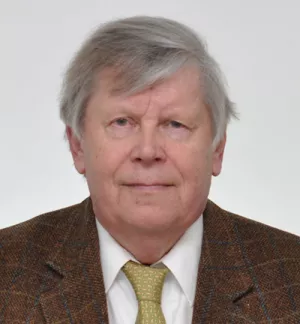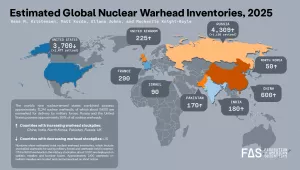Opening remarks at the Global Cylinder Identification and Monitoring System Stakeholder Meeting, Washington, DC., 29 April, 2014
Throughout the IAEA’s safeguards history, proliferators have hesitated to divert declared nuclear material, preferring to use undeclared material at undeclared locations to decrease the prospect of detection. Loopholes, particularly in the front end of the fuel cycle in the safeguards system have been exploited by states. Illicit acquisition or clandestine production of uranium hexafluoride (UF6) is no exception. Three major proliferation cases during last two decades used unreported UF6 in their experiments. A Q Khan’s network acquired manufactured UF6 cylinders from foreign markets, and used them to transfer UF6 to their clients. Serial numbers engraved by the manufacturers to the cylinders were essential in confirming movements of some of those cylinders. It is also worth noting that two dozen of these cylinders acquired by the network are still to-day unaccounted for.
About 100000 UF6 cylinders are currently in worldwide use. Most of them are used to store depleted uranium, but there are annually about 15000 movements of cylinders containing low enriched or natural uranium. These cylinders move from country to country often over seas between uranium conversion, enrichment and fuel fabrication plants on journeys and voyages, which last several weeks. While industry is good at tracking valuable materials, it may take several weeks before missing cylinders are detected and the cylinders are located.
Inventory of low enriched uranium in a cylinder is not negligible. A 30B cylinder contains typically 2-2.3 metric tons UF6 enriched up to 5 % U-235. If enriched further up to 90 % U-235, the amount uranium would be sufficient for more than one nuclear explosive. Similarly, a 48 Y cylinder with some 12.5 metric tons of natural UF6 is enough to produce high-enriched uranium for one nuclear device.
Such cylinders in transit or stocks can be diverted by a state or obtained by subnational groups or black market vendors. There are several diversion scenarios including diverting a known, declared cylinder for uranium enrichment in a clandestine facility, or misusing a declared cylinder without reporting to the regulatory body or the IAEA in a declared, safeguarded facility, or using an undeclared cylinder at a safeguarded facility. The IAEA safeguards measures provide a high risk of detection, if declared cylinders at declared facilities were diverted or manipulated, but the system also has its weaknesses. The IAEA inspection frequencies at enrichment plants are high. However, the IAEA verification timeliness criteria for detection set up for low enriched and natural uranium conversion and fabrication plants, is one year. Also the detection probabilities at these facilities are set lower. Thus a considerable amount of time could have elapsed before a theft or diversion of a UF6 cylinder is found and confirmed.
Clandestine nuclear proliferation networks have also brought a new challenge: low technology centrifuges that can be manufactured under the radar screen of current export controls. The raw materials needed for such centrifuges are more widely available today given their variety of other uses. Let us take as an example a small 2000 centrifuge plant with simple machines with capabilities similar to the P-2 centrifuge, which has a fairly small foot print with no tell tale signs visible outside. Each such centrifuge has a 5 SWU/year capacity, which means that one can – depending on operating parameters of the plant – produce in one to two months from the contents of a full low enriched UF6 cylinder a significant quantity (SQ) of high enriched uranium sufficient for a crude nuclear device. Using the content of a 48 Y cylinder filled with natural uranium UF6, it will take about six months to churn it to highly enriched uranium sufficient for a nuclear device.
The examples above demonstrate the vulnerabilities associated with UF6 shipments and storages. However, there are also operational and economic reasons to consider better, unified cylinder identification (ID) tracking systems for full and empty UF6 cylinders, which benefit both the facility operators, the State Systems for Accountancy and Control Systems (SSAC), and the IAEA in its verification mission. Improved timeliness for detecting a cylinder diversion is in the interest of all parties. Unique cylinder IDs improve the efficiency and effectiveness of the inspections by the IAEA and regulatory bodies resulting also in savings on the side of the operators. Good, efficient housekeeping is in the interest of industry, reducing the number of irregularities and contributing to the industry’s positive image.
Unique IDs provide the IAEA with the opportunity to establish and maintain knowledge on the tare weights of cylinders in a manner, which has not been possible until now. With the design and installation of ID reading systems inspectorates can take full advantage of unattended monitoring systems at enrichment, fuel fabrication and conversion plants, which use information provided by the operators directly to inspector computers residing at these facilities. The inclusion of cylinder IDs to inventory change reports and physical inventory listings will make nuclear material transit matching of the IAEA more efficient and timely.
There are also a number of challenges to overcome. Development of a reliable, tamperproof and robust system, which is able to survive tropical temperatures and humidity, arctic cold, and shocks during movements of containers is not trivial. Another hurdle to pass is the establishment of an agreed universal database, where all parties can share necessary information in a secure manner.
As the growth of nuclear industry during the coming decade is considered to increase, the number of cylinder shipments will expand accordingly. Beyond that, new vendors with less experience will enter the uranium conversion and enrichment market. Depleted uranium stocks will likewise continue to grow. Under such a scenario, there is no reason to discount the disappearance of interest to nuclear proliferation or illicit trafficking of nuclear material. Thus an enhanced system to track UF6 movements is a must. Better to be safe than sorry.
Heinonen, Olli. “Why the Monitoring of Movements of UF6 Cylinders Matters.” April 29, 2014





